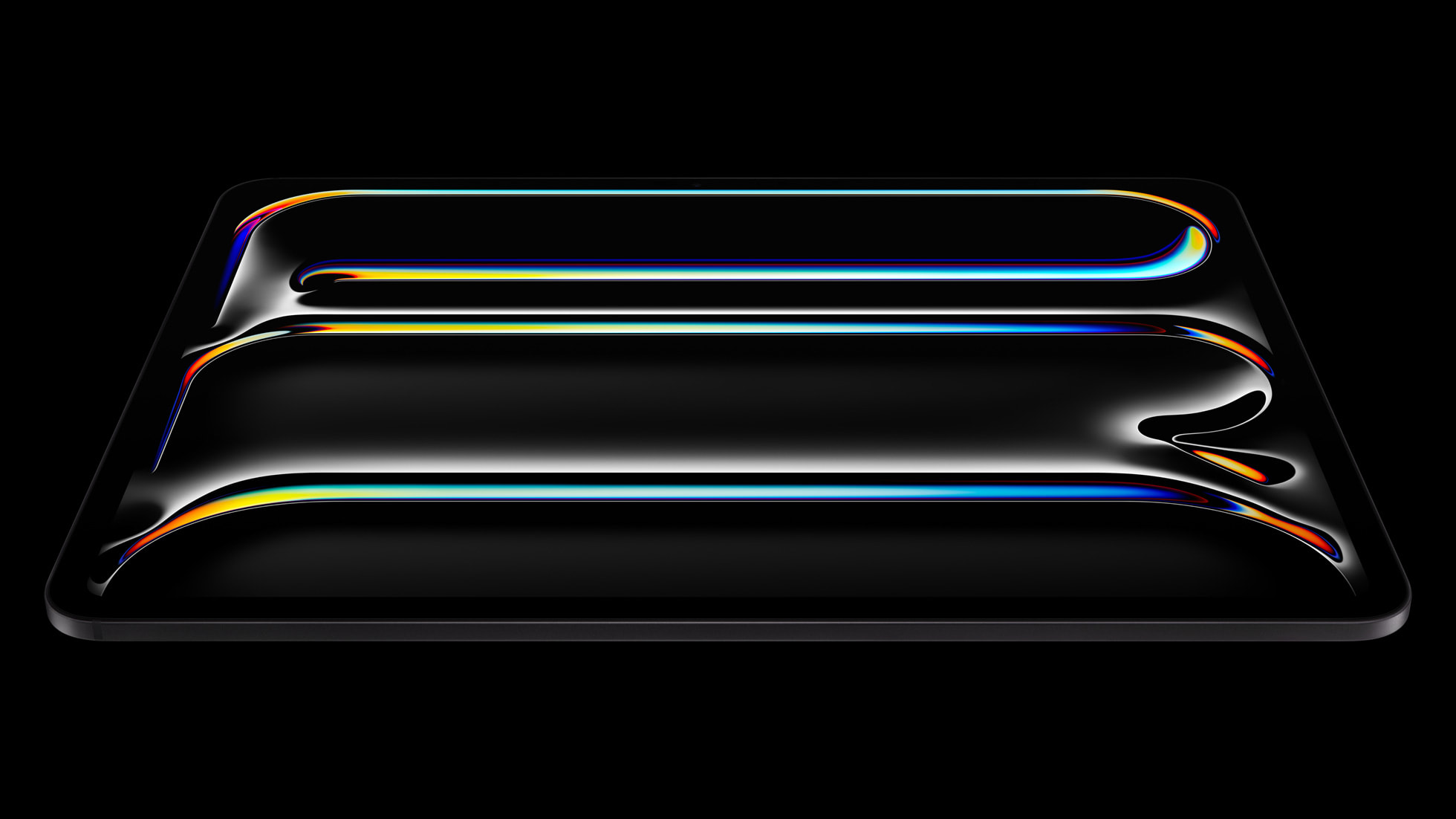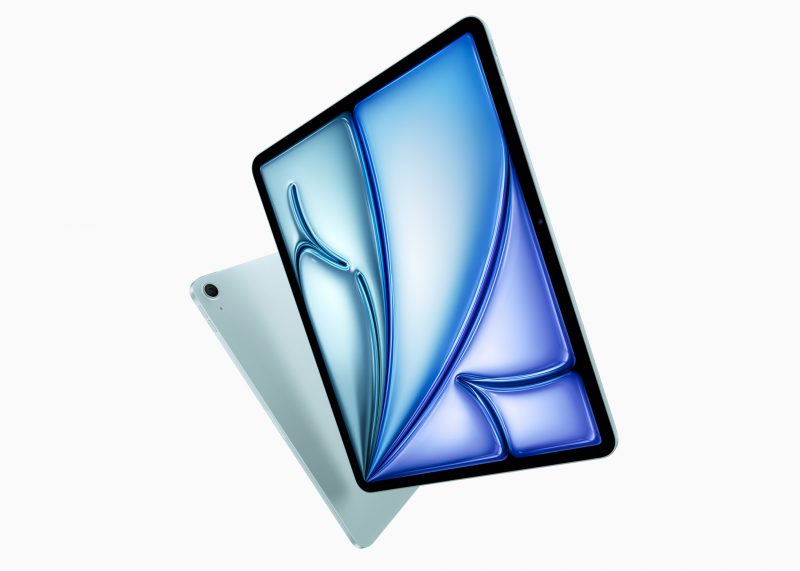 APPS
APPS
 APPS
APPS
 APPS
APPS
Apple Inc. today unveiled another powerful chip into its M-class family of silicon with the M4 that will power the newly launched next-gen iPad Pro also announced during the company’s “Let Loose” event.
The company also announced a new iPad Air powered by the M2 chip, which will come in two sizes, and a bevy of accessories for both new devices, including a new Pencil and Magic Keyboard.
The new M4 chip is built using second-generation three-nanometer technology with 28 billion transistors and is a system-on-chip design that features AI accelerators, a display engine and a central processing unit. Its debut will be inside of the new iPad Pro.
“The power-efficient performance of M4, along with its new display engine, makes the thin design and game-changing display of iPad Pro possible, while fundamental improvements to the CPU, GPU, Neural Engine, and memory system make M4 extremely well-suited for the latest applications leveraging AI,” said Johny Srouji, Apple’s senior vice president of hardware technologies.
The new CPU has up to 10 cores, with a new 10-core graphical processing unit that builds on the GPU architecture introduced in the M3, which includes dynamic caching, capable of hardware-accelerated ray tracing and mesh shading, which it will bring to the iPad for the first time. Apple said that M4 has the fastest Neural Engine ever, capable of 38 trillion operations per second, claiming that it is faster than any AI chip for PC released today.
The previous iPad Pro was built with the M2, so upgrading to the M4 represents a giant leap in performance. Apple claims that with the new chip, the iPad Pro has up to four times faster rendering performance and 1.5x faster CPU performance than its predecessor.

Apple redesigned the new iPad Pro, with the help of the M4, to become the thinnest Apple product ever with a particularly powerful display in two different form factors: an 11-inch and a 13-inch model.
The 11-inch model is only 5.3 millimeters, and the 13-inch model is even thinner at 5.1 millimeters. The smaller model weighs less than a pound, while the 13-inch is only about a quarter pound heavier. The design is still sleek and refined, with rounded edges and a narrow bezel. Apple has also moved the front-facing camera onto the broader “landscape” side so that people can hold it longways when using it, which is becoming more commonplace in the industry.
The display has also been upgraded with a new type of OLED that combines two displays stacked atop each other in tandem to deliver higher brightness and deeper blacks. By combining the light from both displays and controlling color and luminance, the display is capable of delivering better high-performance visuals than its previous generation. The company said that the new screen is capable of supporting up to 1,000 nits of brightness, which means that it should be visible even on a sunny day, and 1,600 nits of peak high-definition resolution brightness.
The new 11-inch and 13-inch iPad Pro come in 256GB, 512GB, 1TB and 2TB configurations. The 11-inch starts at $99 for the Wi-Fi model and $1,999 for the addition of cellular data, while the 13-inch starts at $1,299 for the Wi-Fi model and $1,499 for cellular data.

Now with the M2 chip, the iPad Air has been redesigned for the first time with two form factors to have both an 11-inch and a 13-inch models for the first time, providing an even larger display for users who want bigger screen real estate.
Just like the iPad Pro, Apple moved the front-facing camera on the iPad Air onto the landscape edge. It features an ultra-wide 12-megapixel camera that uses Apple’s Center Stage capability, which uses AI to keep the people who are talking in the field of view. As mentioned before this camera location is becoming an industry standard because turning the device lengthwise provides a greater amount of horizontal view when taking pictures or speaking to the camera.
The new model also features dual microphones designed to work in unison with the cameras to minimize distracting background noise. It also has landscape stereo speakers that use spatial audio to assist with creating better soundscapes. The 13-inch model also has better speakers with double the bass, making for deeper sounds in music and movies.
The iPad Air comes with the M2 chip, an upgrade over the last generation which used the M1, featuring an 8-core CPU and 10-core GPU. Apple said that when combined with faster memory bandwidth the new Air is nearly 50% faster than the previous model. For connectivity, the Air supports Wi-Fi 6E and 5G cellular networks.
The 11-inch iPad Air starts at $599 and the 13-inch iPad Air starts at $799. People can order the new Air starting today online and it will arrive in stores on May 15.

Apple Pencil gets a major upgrade with a Pro version that adds several new capabilities to what is already a versatile smart stylus. Apple added several new sensors in the barrel that can detect squeezes and the rotation of the pencil alongside haptic feedback that completely changes the experience of using the pencil.
A sensor inside the barrel can detect when a user “squeezes” the barrel with light pressure. This will allow users to bring up a palette to quickly switch tools using the pressure of their fingers without needing to move over a menu on their screen. Inside of a drawing app, is a lot like being able to interact with a context window using a left-click, otherwise users can only tap using the tip of the pencil, which means that they have to move away from what they’re working on to bring up menus.
The addition of a haptic engine can deliver light “taps” to confirm when users squeeze use double-tap, or snap something into place in an app. It can also slightly shake the pencil to let them know something has happened or they rolled over an active portion of an app providing extra context.
A gyroscope in the pencil that Apple refers to as “barrel roll” can let it tell what orientation the pencil has. This can turn the pencil into a paintbrush paint app so that the user can just sweep the pencil and the brush will rotate with them. This will give artists a level of fine control over their pencil and brush strokes in 2D art, but it will also give 3D artists even greater control over motion because it will allow them to rotate and adjust by just turning their hand.
For people who lose their accessories, Pencil Pro now has support for Find My, which means that if they misplace it, they can find it more easily.
Apple also released an all-new Magic Keyboard, a lightweight keyboard with a trackpad that features backlit keys with a magnetic backrest that can support the new iPad Air and iPad Pro. All a user needs to do is attach the iPad to the back and the smart connector sets up power and data without the need for Bluetooth, there’s also a USB-C connection for charging if needed. The newly redesigned keyboard includes a function row of keys that allows users to adjust the brightness of the backlit keys and control the volume.
The new Apple Pencil Pro is available for $129, whereas the 11-inch Magic Keyboard sells for $299 and the new 13-inch Magic Keyboard for $349.
Support our mission to keep content open and free by engaging with theCUBE community. Join theCUBE’s Alumni Trust Network, where technology leaders connect, share intelligence and create opportunities.
Founded by tech visionaries John Furrier and Dave Vellante, SiliconANGLE Media has built a dynamic ecosystem of industry-leading digital media brands that reach 15+ million elite tech professionals. Our new proprietary theCUBE AI Video Cloud is breaking ground in audience interaction, leveraging theCUBEai.com neural network to help technology companies make data-driven decisions and stay at the forefront of industry conversations.